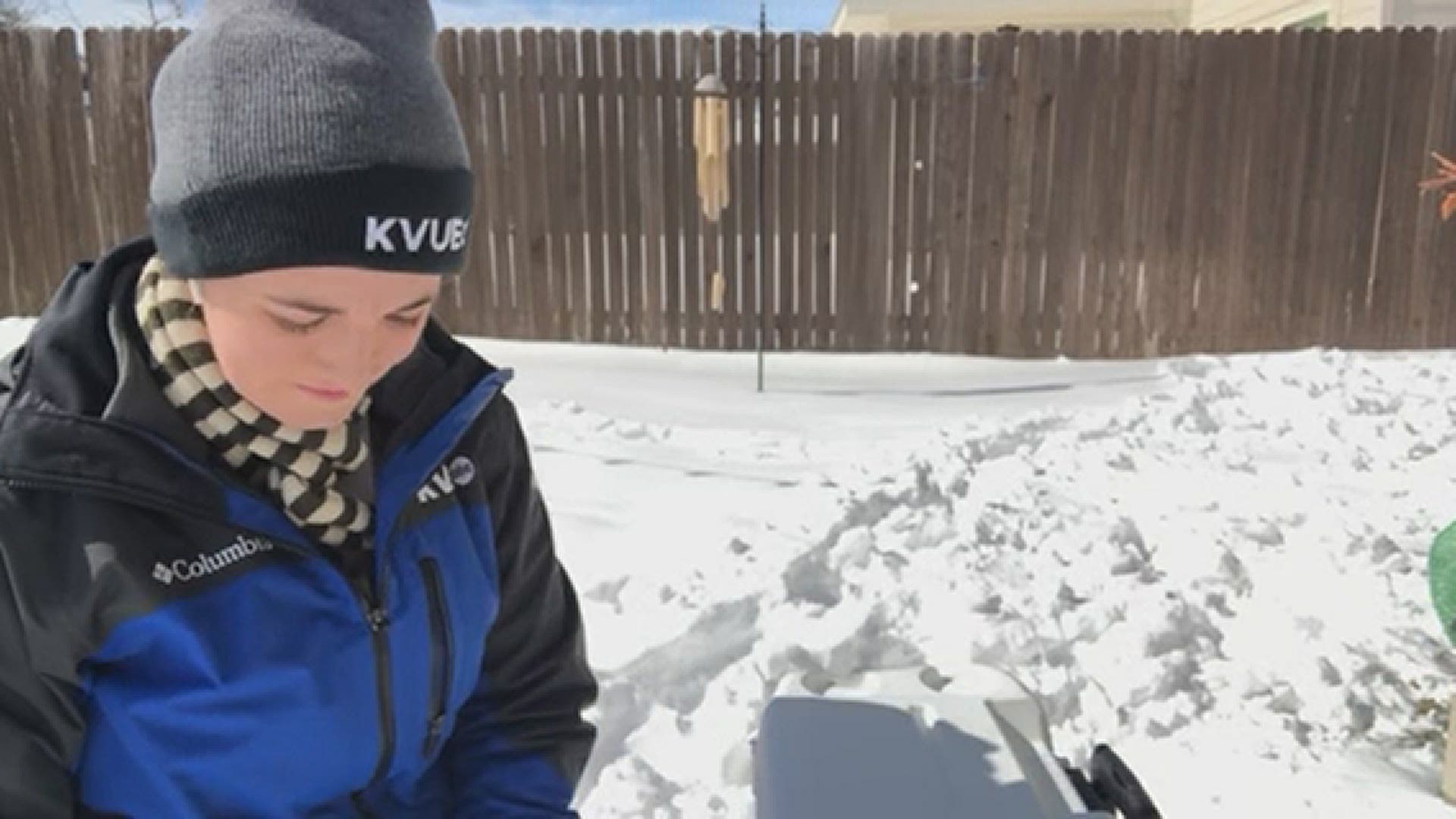AUSTIN, Texas — Many homes in Central Texas are without power right now, meaning refrigerators and freezers aren’t working. Here’s what you should know about your food.
The USDA says to keep the refrigerator and freezer doors closed as much as possible. Your refrigerator will keep food safely cold for about four hours if it’s unopened. Your freezer will hold the temperature for about 48 hours.
If the freezer is half full, it will stay for 24 hours if the door remains closed.
An appliance thermometer will help determine the temperature in your refrigerator or freezer no matter how long your power has been out. If you’re not sure whether food is cold enough, take its temperature with a food thermometer.
Do not put your food outside in the snow. It can be exposed to the sun’s rays even when the temperatures are cold. The refrigerated food may become too warm and foodborne bacteria could grow. Perishable items could also be exposed to unsanitary conditions or to animals.
Instead of putting your food outside, take advantage of the cold weather by making ice. Fill buckets, empty milk cartons, or cans with water and freeze them outside. Then put the homemade ice into your freezer, refrigerator or cooler.
If you’re headed to the store, be sure to buy food that doesn’t need to be refrigerated including shelf-stable food, boxed or canned milk, water and canned goods.
Certain foods are OK to refreeze after they have thawed, including hard cheeses, fruit juices, breads, rolls, muffins, cakes, pie crusts, flour cornmeal, nuts, and breakfast items like waffles pancakes and bagels.
If your frozen food still contains ice crystals and feel as cold as if refrigerated, refreeze items except ice cream and frozen yogurt. Some of your food may lose texture or flavor as you refreeze them.
Never taste food to determine its safety. When in doubt, throw it out.
Refrigerated food to keep vs. discard
DISCARD:
- Meat, poultry seafood, soy meat substitutes tuna, shrimp, lunchmeats, pizza, canned meats
- Soft cheeses including blue, brie, cottage, cream, ricotta, mozzarella, queso blanco
- Shredded cheeses
- Low-fat cheeses
- Milk, cream, sour cream, buttermilk, evaporated milk, yogurt, soy milk
- Baby formula if opened
- Eggs, egg dishes, egg products
- Custards and puddings
- Fresh fruits, cut
- Fish sauces
- Opened cream-based dressings
- Spaghetti sauce if opened
- Refrigerator biscuits, rolls, cookie dough
- Cooked pasta, rice, potatoes
- Pasta salads with mayonnaise or vinaigrette
- Fresh pasta
- Cheesecake
- Cream-filled pastries
- Pies – custard, cheese filled, quiche
- Greens, vegetables pre-cut, pre-washed, packaged
- Cooked vegetables, tofu
- Vegetable juice if opened
- Baked potatoes
- Commercial garlic in oil
- Potato salad
KEEP:
- Hard cheeses, cheddar, Colby, swiss, parmesan, provolone, romano
- Processed cheeses
- Grated parmesan, romano
- Butter, margarine
- Fruit juices, opened
- Canned fruits, opened
- Fresh fruits, coconut, raisins, dried fruits, candied fruits, dates
- Peanut butter
- Jelly, relish, taco sauce, mustard, ketchup, olives, pickles
- Worcestershire sauce, soy sauce, barbecue sauce, hoisin sauce
- Opened vinegar-based dressings
- Bread, rolls, cakes, muffins, quick breads, tortillas
- Breakfast foods- waffles pancakes bagels
- Pies with fruit
- Fresh mushrooms, herbs spices,
- Raw vegetables
PEOPLE ARE ALSO READING:

